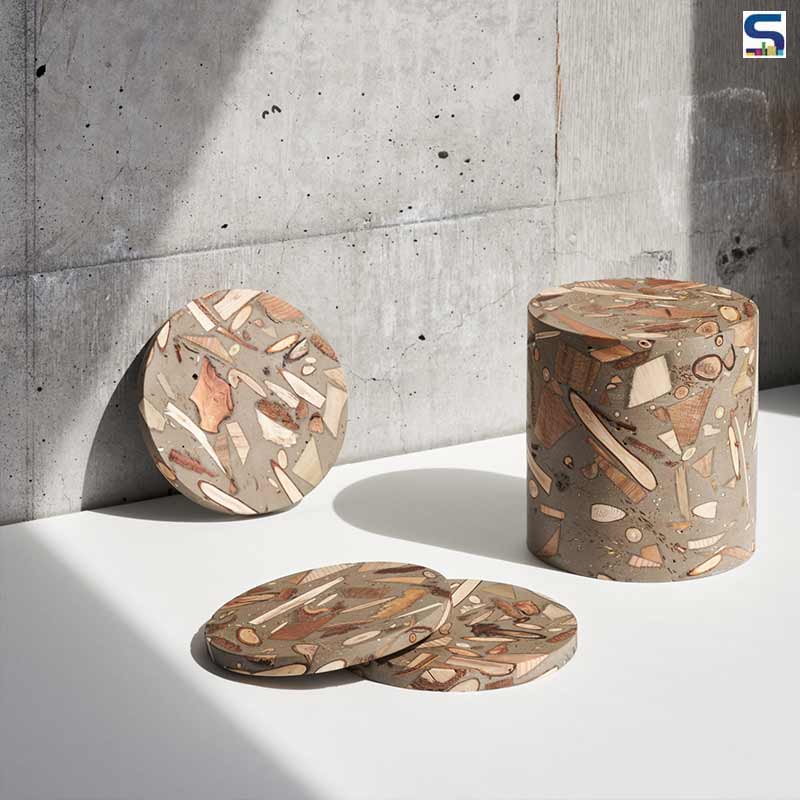
Yuma Kano, a Japanese designer, created an innovative wood- ForestBank- from forest debris such as tree leaves, seeds, bark, and soil. All these things considered “worthless” are used for making furniture. SURFACES REPORTER (SR) presents more details about this new type of wood – its creation, characteristics, and uses.
Also Read: World’s Biggest Wooden Door that can withstand fire for more than 120 mins | SURFACES REPORTER Product Update
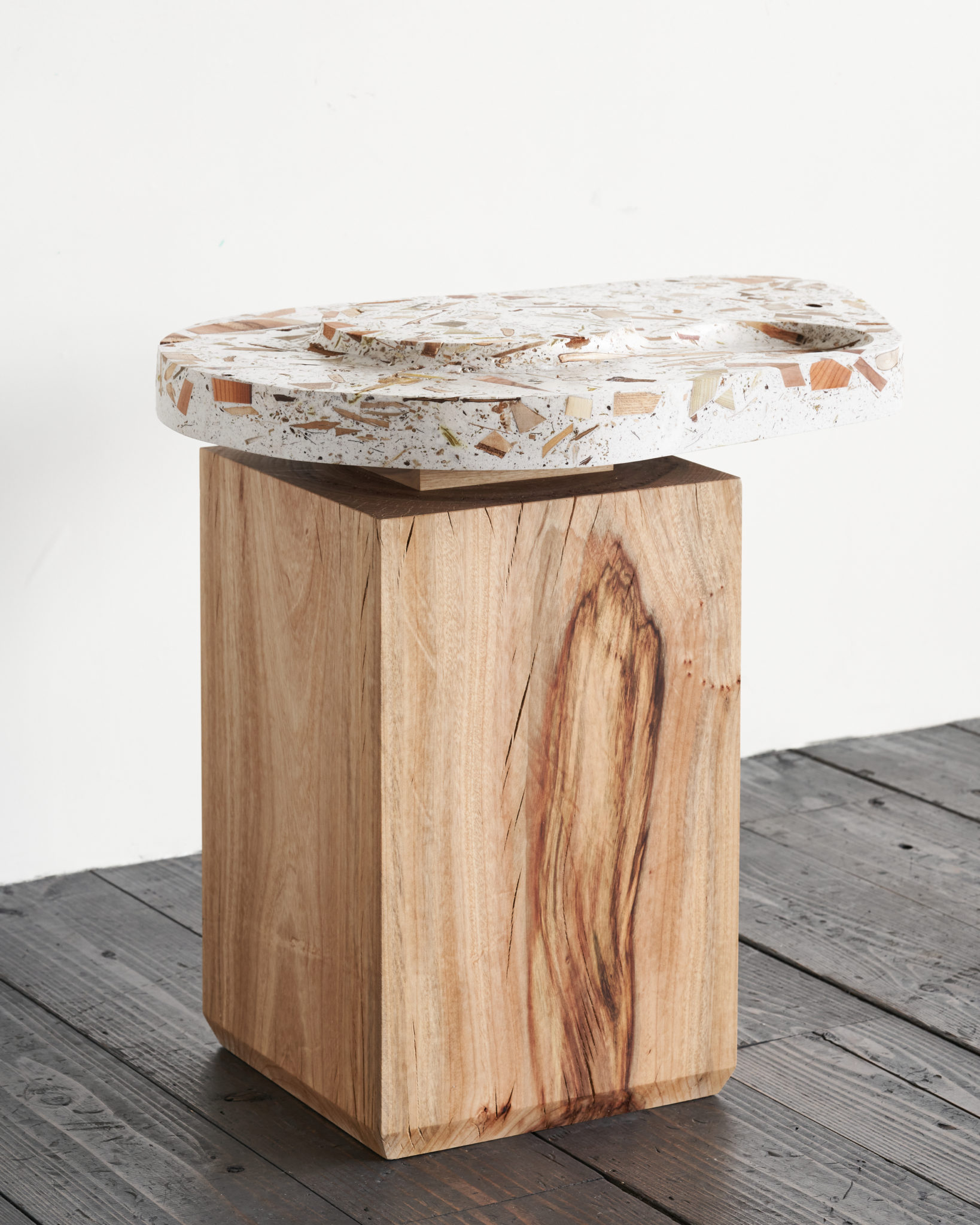 Yuma Kano showcases two furniture pieces- a chair and table made from ForestBank on the occasion of the 2022 edition of DESIGNART Tokyo. These furniture pieces were displayed at the main exhibition of the event
Yuma Kano showcases two furniture pieces- a chair and table made from ForestBank on the occasion of the 2022 edition of DESIGNART Tokyo. These furniture pieces were displayed at the main exhibition of the event
Tree Waste Become Striking Furniture and Design Element
Any waste from trees like seeds, soil, bark and other plant items are combined only with a reactive mineral base and combined using water-based acrylic resin, without any volatile organic compounds or organic solvents.
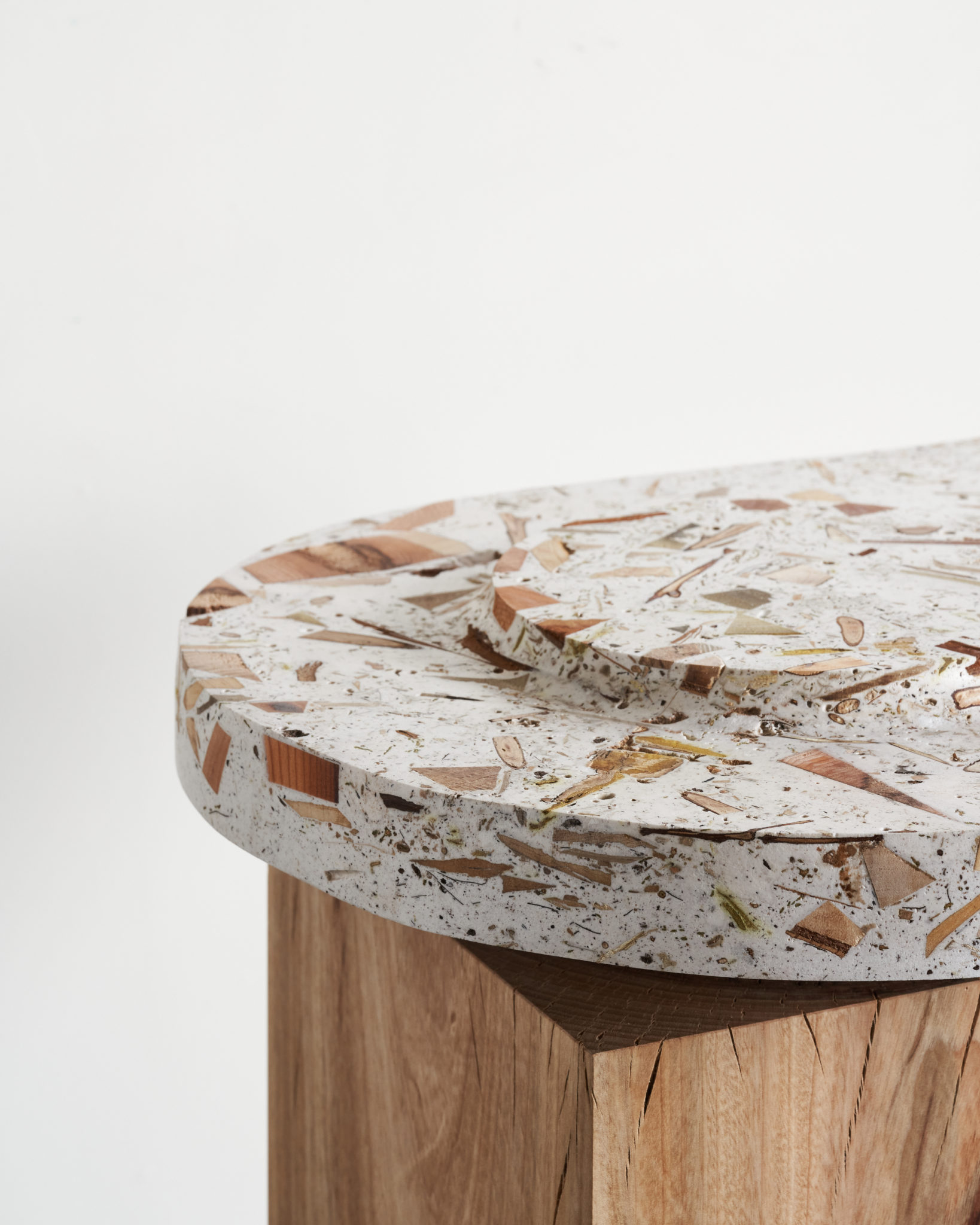 The resulting material showcases different colours and unique patterns depending on the season and other conditions of the forest at harvest time.
The resulting material showcases different colours and unique patterns depending on the season and other conditions of the forest at harvest time.
Also Read: 6 Steps You Need to Try to Care for Your New Wooden Furniture
The top surfaces of the ForestBank show the actual yellow and green colours of the trees, which are dyed by natural bacteria. With the change in season, the colour of the green leaves change into brown and orange. In contrast, the forest floor soil gives brown and black shades.
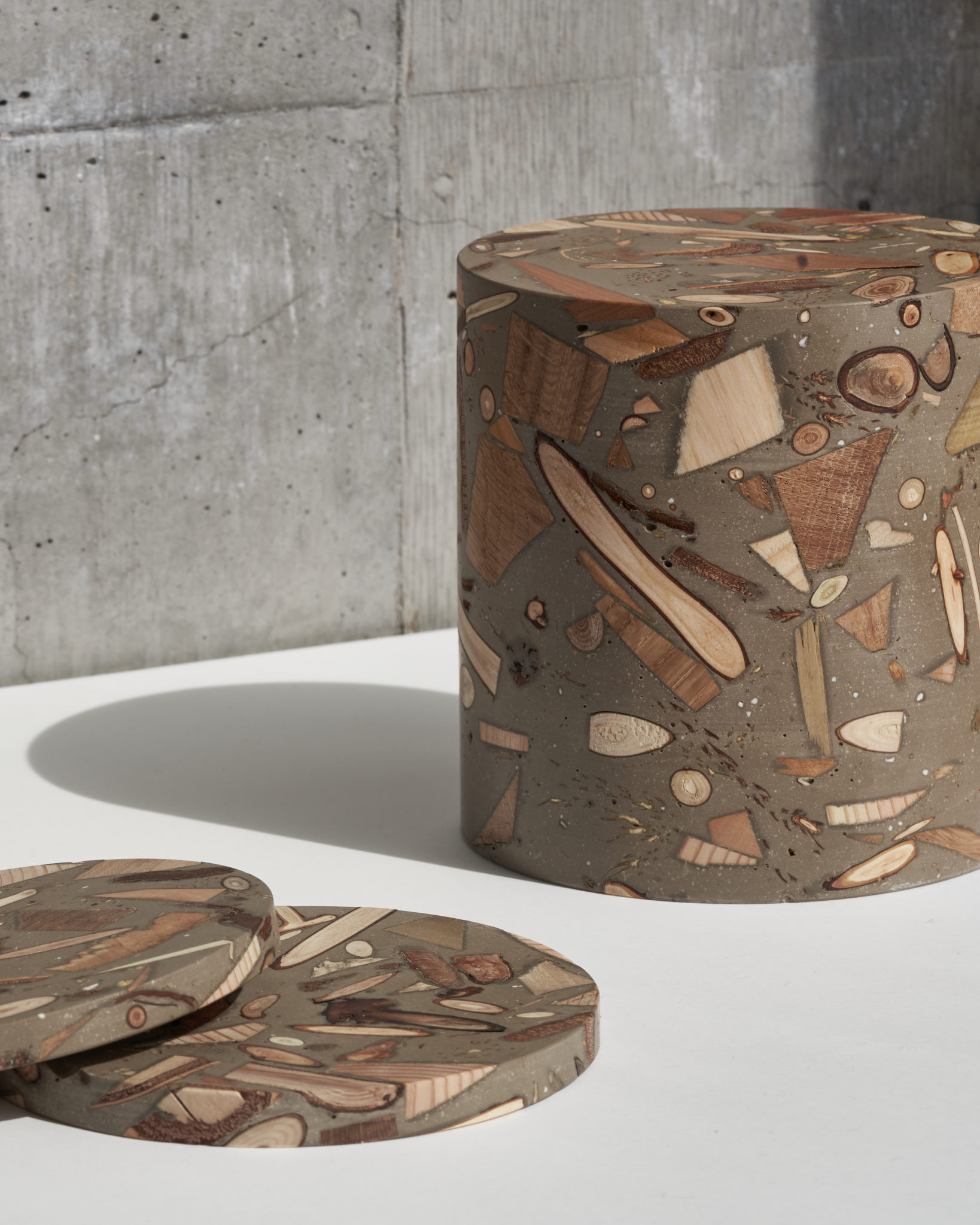 The complex patterns on the surface result from cross-sections of roots and seeds generally concealed in the earth. Further, the patterns may vary depending on the angle and depth of the cut.
The complex patterns on the surface result from cross-sections of roots and seeds generally concealed in the earth. Further, the patterns may vary depending on the angle and depth of the cut.
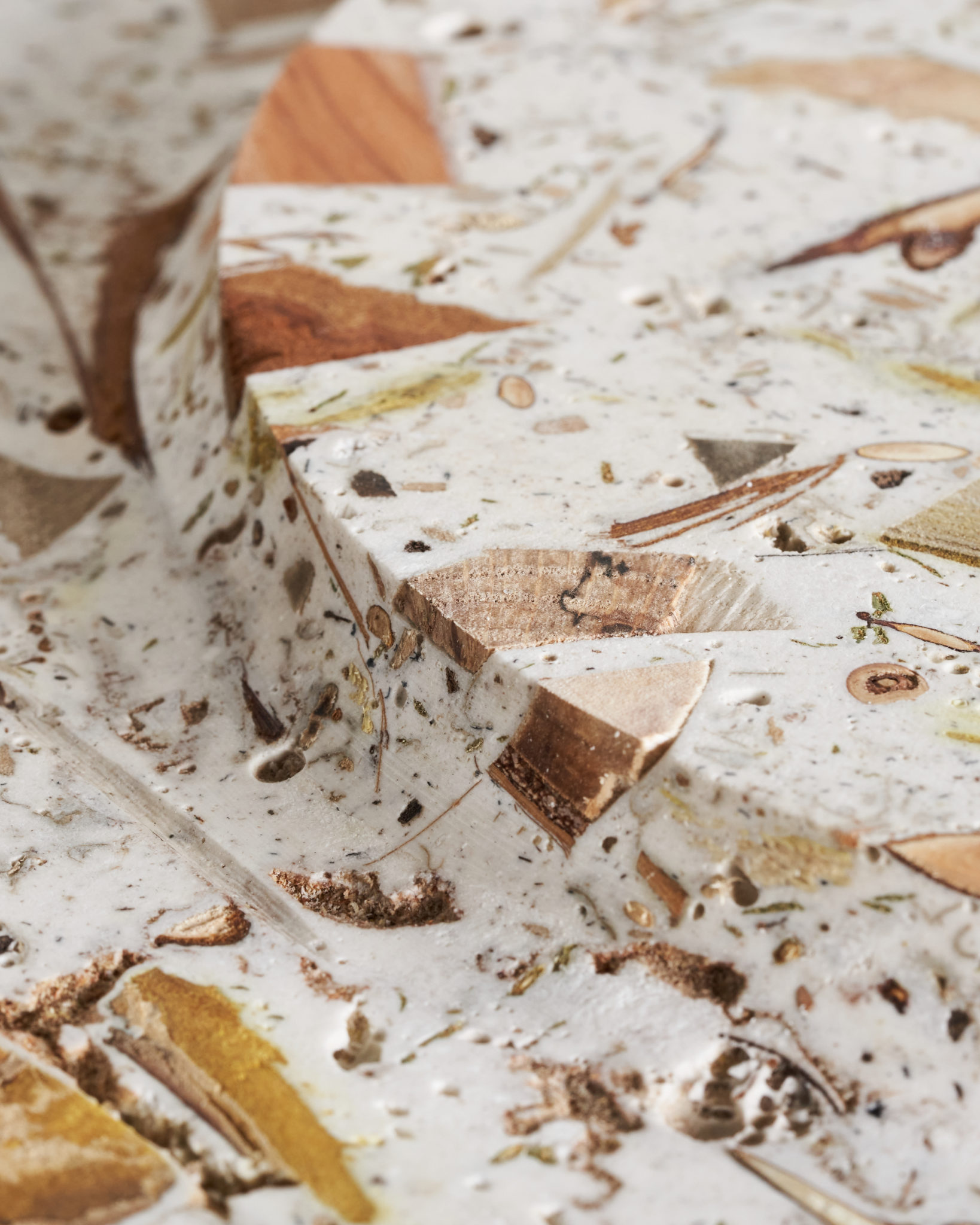 Waste from any tree cited in parks, roadsides and gardens, and any wood waste from wood workshops can also be used to create the furniture. The furniture is shaped using normal woodworking techniques and applied in different places like furniture making and interior design.
Waste from any tree cited in parks, roadsides and gardens, and any wood waste from wood workshops can also be used to create the furniture. The furniture is shaped using normal woodworking techniques and applied in different places like furniture making and interior design.
Product Details
Project Name: ForestBank
Designer: Yuma Kano
Event: DESIGNART Tokyo 2022
Photo Courtesy: Shot by Kusk, unless stated otherwise